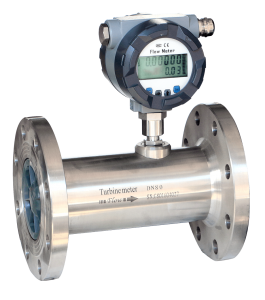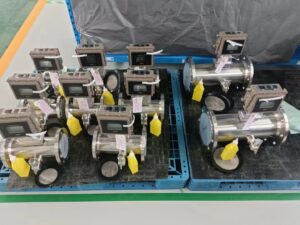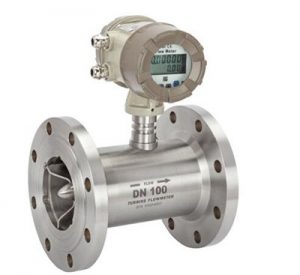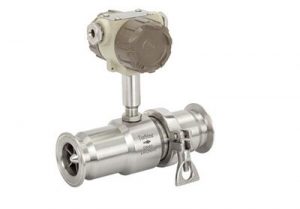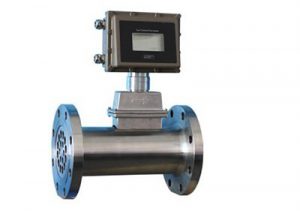Turbine flow meters come with their own set of advantages and disadvantages.
Some of the advantages of turbine flow meters include:
- Suitable for gases and liquids.
- Highly accurate and precise, turbine flow meters are ±0.5% accurate normally. However, it is possible to achieve an accuracy of ±0.25%.
- Economical to purchase so it is one of the preferred flow meters in world trade settlement.
- Easy to set up and operate, compact structure, and lightweight.
- Useable for a wide range of applications, medium, and large diameters are generally up to 20:1 or more, and small diameters are 10:1, and the starting flow rate is also low.
- Less pressure loss. They produce an only moderate head loss.
- No zero drift, strong anti-interference ability.
- Turbine meters of sizes above about 50 mm, and especially the very large sizes have excellent short-term repeatability. If they are recalibrated at fairly frequent intervals they can be extremely accurate.
- Their output is directly digital and, in the best meters of this type, is practically linear over a fair range of flowrates- about 5 or 6:1 in the smaller sizes, increasing to about 10:1 in large turbine meters.
- They are compact, being only the same diameter as the pipe in which they are installed.
- The compactness of the smaller sizes of turbine meters, combined with their freedom from any components necessitating a hole in the pipe wall, enables them to be designed for operation at very high pressures.
- If they should seize up, they do not block the flow.
Some disadvantages include:
- The requirement of clean, dry liquid/gas samples.
- Errors caused by high viscosity in samples.
- Gas flowmeters are easily affected by density and are closely related to temperature and pressure, so temperature and pressure corrections are required.
- Frequent calibration checks needed.
- Regularly add oil to ensure adequate lubrication of the bearing to ensure measurement accuracy and prolong the service life.
- They are rather more expensive than many types of flowmeters, particularly in larger diameters.
- A turbine meter can’t maintain its original calibration over a very longperiod, because this is bound to change gradually with wear or fouling surfaces, and periodical recalibration is, therefore, necessary if high accuracy is to be maintained. Bearing problems are more likely to occur with liquids of poor lubricating quality, and their effect with liquids containing a high proportion of suspended solids or with highly corrosive liquids can be serious.
- The calibration characteristics of a turbine meter are sensitive to changes in the viscosity of the liquid being metered. The effect of viscosity is very great in small turbine meters, becoming progressively less serious as the size of the meter increases. With oil, or any other viscous liquid whose viscosity is likely to change with small changes in temperature, it is difficult to obtain high accuracy without installing a calibration device such as a pipe prover to enable the meter to be recalibrated rather frequently under the actual conditions of use; this is a common practice in the petroleum industry.
- They are sensitive to flow disturbances and especially to the presence of swirls.
- The very small sizes do not perform as well as their big bothers, because of the relatively greater importance of bearing fiction in small metes.

